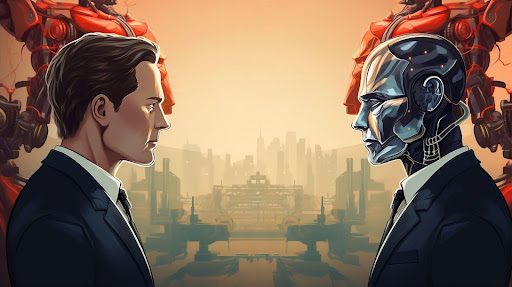
AI’s rapid integration into various sectors, including creative fields like art and animation, has sparked heated debates. While some view AI as a tool that enhances creativity and generates new opportunities, others see it as a threat to jobs and artistic integrity. This article explores the conflicting views surrounding AI, focusing on the ethical dilemmas and potential benefits that accompany its rise.
Unfair Use and Sale of AI-Generated Works
The ethical issues surrounding AI-generated content have become a major point of contention. Many artists and creators express concern that AI is being used to generate content that closely mimics human-created art, often without proper credit or compensation to the original artists. This has led to instances where AI-generated works are sold on platforms without recognizing the human input that inspired them. On digital marketplaces like Opuna, people sell their AI creations, such as bots, AI-generated paintings, applications, and other digital goods and services. While this presents new opportunities for some, it also raises questions about the fairness of profiting from works that are essentially derived from others’ creative efforts.
Defending AI and Its Possibilities
New Jobs and Opportunities
Proponents of AI argue that, rather than taking away jobs, AI can create new ones. As industries evolve, new roles emerge that require expertise in AI technology, such as AI analysts, developers, and data scientists. These positions offer exciting opportunities for those willing to adapt and learn. Furthermore, AI can automate mundane tasks, allowing professionals to focus on more complex and creative aspects of their work, thereby enhancing productivity and job satisfaction.
Technology in Art
Many artists have long embraced technology as a tool to enhance their creative processes. From digital brushes to advanced graphic design software, technology has been a part of the artistic landscape for decades. AI is seen by some as the next logical step—a tool that can help artists experiment with new styles, generate ideas, and streamline their workflows. For example, AI can assist in generating background elements, allowing artists to concentrate on the central aspects of their work. This integration of AI into the creative process is viewed by many as an opportunity to expand the boundaries of art, rather than a threat to its integrity.
Media Scandals
One of the most notable recent controversies involved a Twitter artist who revealed that they used AI to generate backgrounds for their artwork due to a debilitating hand condition. This confession sparked outrage among some who accused the artist of “cheating” and devaluing the hard work of others who create backgrounds manually. However, many others defended the artist, arguing that AI was simply a tool that allowed them to continue their work despite physical limitations.
Another significant incident occurred with the release of the anime short “Dog and Boy,” produced by WIT Studio and Netflix. The film used AI to generate background scenes, which led to a backlash from the animation community. Critics argued that the decision to use AI undermined the contributions of human artists, particularly in an industry where many animators already struggle with low wages and job insecurity. This controversy highlighted the ethical concerns of using AI in creative industries and the potential consequences for artists.
Negative Perceptions of AI
Job Loss
The fear of job loss due to AI is a common concern, particularly in industries where automation is rapidly advancing. Many workers worry that AI will replace their jobs, especially in sectors like manufacturing, logistics, and customer service, where tasks can be easily automated. This fear is not unfounded, as some industries have already seen significant reductions in human labor due to AI-driven processes.
Diminished Artistic Merit
Critics of AI in creative fields argue that the use of AI diminishes the value of human creativity. They contend that AI-generated art lacks the depth and originality that come from human experience and emotion. Additionally, the ability of AI to mimic the styles of well-known artists has led to accusations of plagiarism and concerns about the devaluation of original artwork. These critics believe that AI should not replace human artists but rather be used cautiously to avoid undermining the integrity of creative work.
Conclusion
The debate over AI is complex, with valid arguments on both sides. While AI offers exciting possibilities for new jobs and enhanced creativity, it also raises significant ethical and economic concerns. As AI continues to develop, it is crucial to find a balance that maximizes its benefits while addressing the legitimate fears of those who feel threatened by its rise. By engaging in open and informed discussions, we can shape a future where AI serves as a tool for progress rather than a source of division.
Interesting Related Article: “Top 5 Artificial Intelligence Providers 2024“
